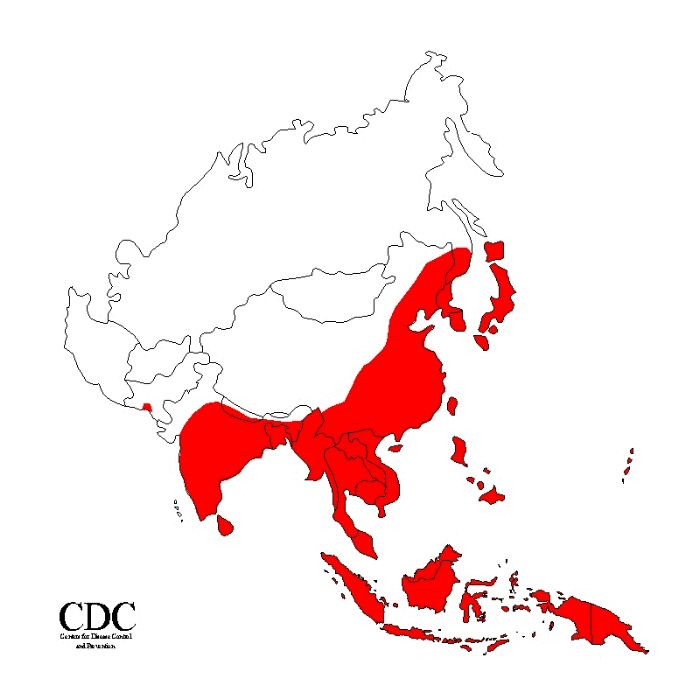
Home | Yellow Fever | Dengue | Japanese encephalitis | Hepatitis C | West Nile Virus
Japanese encephalitis is a flavivirus that is transmitted by the mosquito Culex tritaeniorhynchus.
Japanese encephalitis is endemic in India, China, Japan, and all of South East Asia. Since the mosquitoes that transmit the virus breed in rice paddies and standing water, the majority of infections occur in rural areas and occur during May and September. Japanese encephalitis is primarily a childhood disease because people develop immunity through exposure. The majority of cases occur in people under the age of 15. The virus can also infect other vertebrates like birds and pigs.
Symptomatology and outcome
Japanese encephalitis causes an acute infection of the central nervous system and causes death in 10,000 of the 35,000 people that become infected each year. 30% of the people that survive the infection develop paralysis, brain damage, or other serious permanent sequelae.
Prevention and management
The disease can be prevented but few people receive vaccination because of the cost and low availability. Before 1988, most people could receive an inactivated virus that provided adequate immunity. However, in 1988, a live-attenuated vaccine from the SA14-14-2 viral strain became available in China and then to other countries. The vaccine provides immunity in 80% of people after a single dose and 97.5% immunity in people after a second dose. The largest problem now lies in providing this vaccine for the poor in countries where Japanese encephalitis is endemic.
References